The Quasimodo Pattern is one of the best and frequently encountered patterns in trading across Forex, Crypto, and Stocks. In this article, we will delve into the Quasimodo Pattern to understand how to properly identify bottoms and tops, increasing the probability of improving your win rate
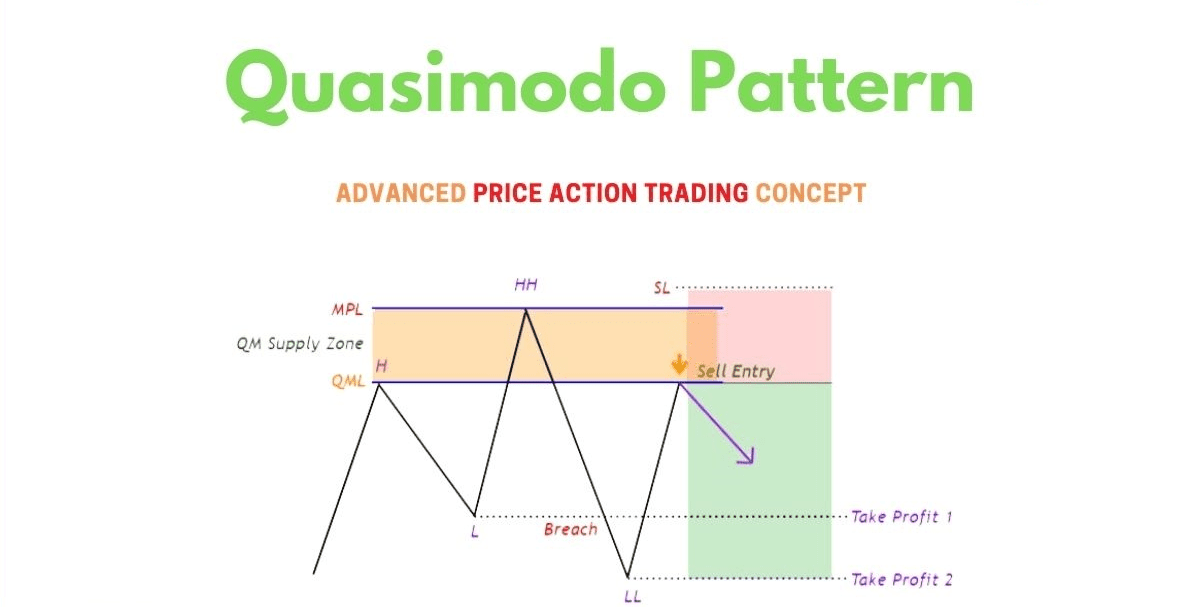
First, let's delve into the basic Quasimodo pattern.
MPL: Maximum Pain Level
QML: Quasimodo Maximum Line

In the pattern mentioned above, it's a reversal pattern.
To identify a reversal, we follow these steps:
The price is in an uptrend/downtrend phase.
The price continues to rise/fall, surpassing the previous high/low.
At this stage, we may encounter situations like a fakeout or the price being in an overbought/oversold region.
Subsequently, the price reverses, breaking the old structure (Break of Structure).
At this stage, there is confirmation of the reversal.
After confirming the reversal in step 3, we set up an entry, take profit (TP), and stop loss (SL) as follows.
So, the structure of a Quasimodo pattern includes:
High, Low, Higher High, Maximum Pain Level, Lower Low, Support/Resistance Flip (SR Flip), Fail to Return (FTR), Fakeout.
Head and Shoulders (H&S)
is a simple pattern, so its effectiveness is not highly regarded. On the other hand, Quasimodo is a complex pattern that involves reading the structure within the model.
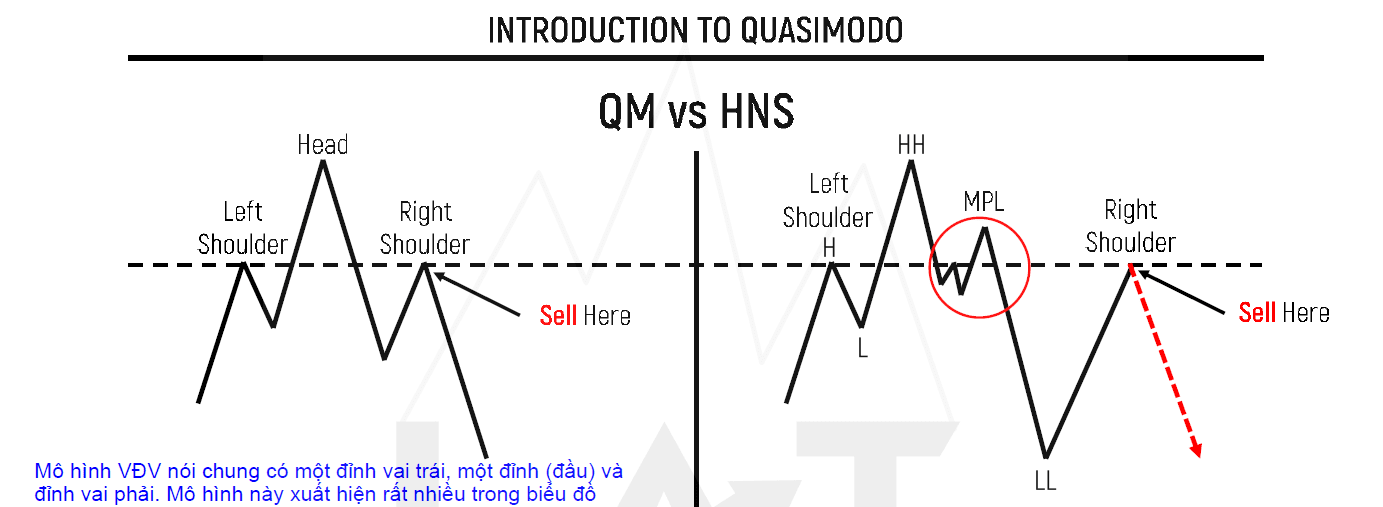
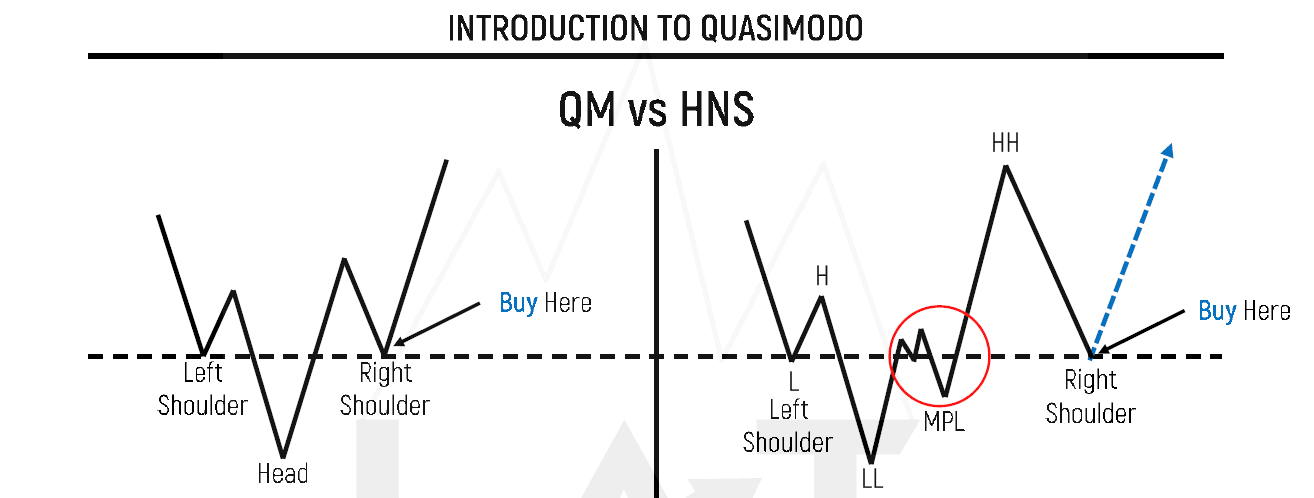
Quasimodo is a reversal pattern, determined based on market structure - the most important aspect in a trade.
The MPL (Maximum Pain Level) area of the Quasimodo Pattern exhibits HH - LL (Higher High - Lower Low) structure, indicating Market Maker manipulation (referred to by retail traders as "killing long/short"). We sell at the MPL when the price retraces. This is also the area of supply/demand zones, order blocks, imbalance, and more...
Basic setup
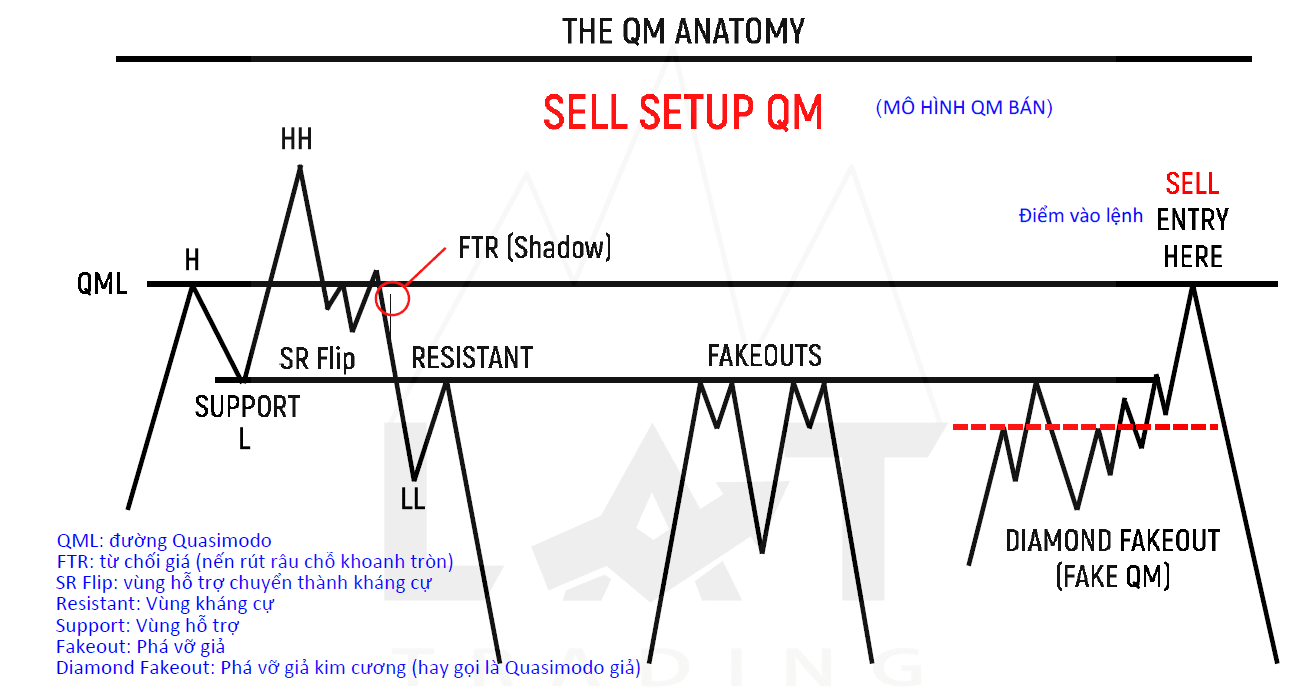
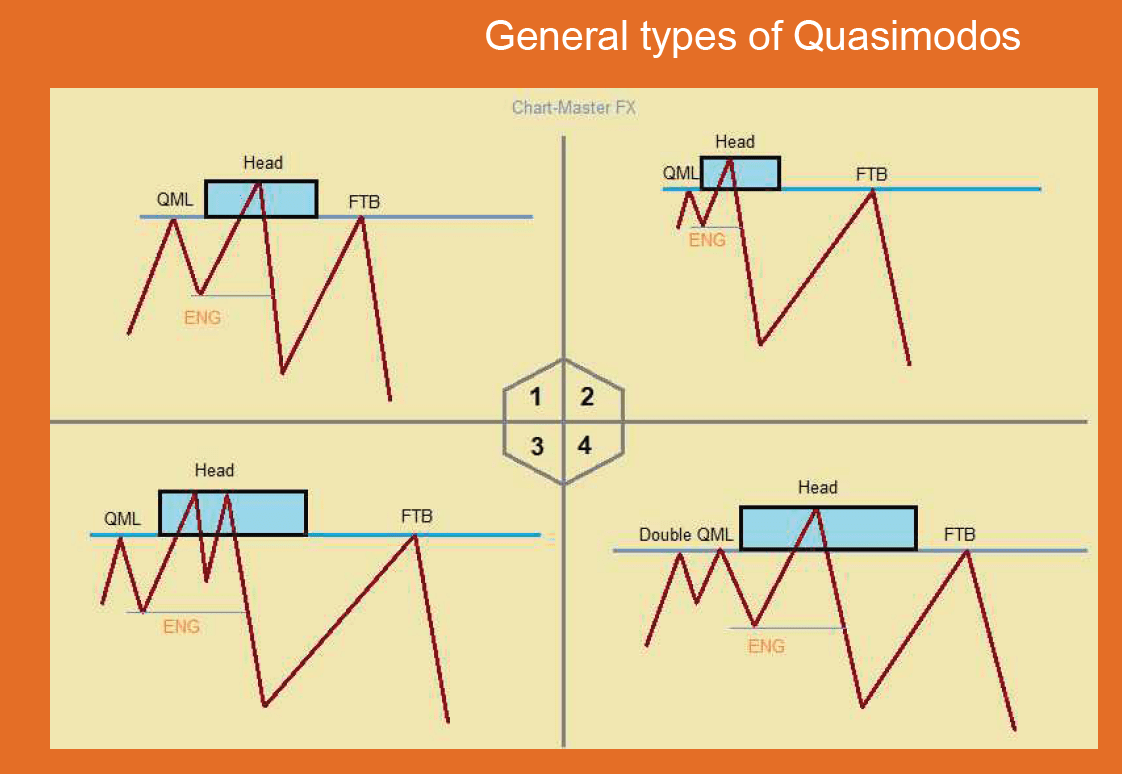
Always pay attention to having BOS before you can enter orders
Examples:
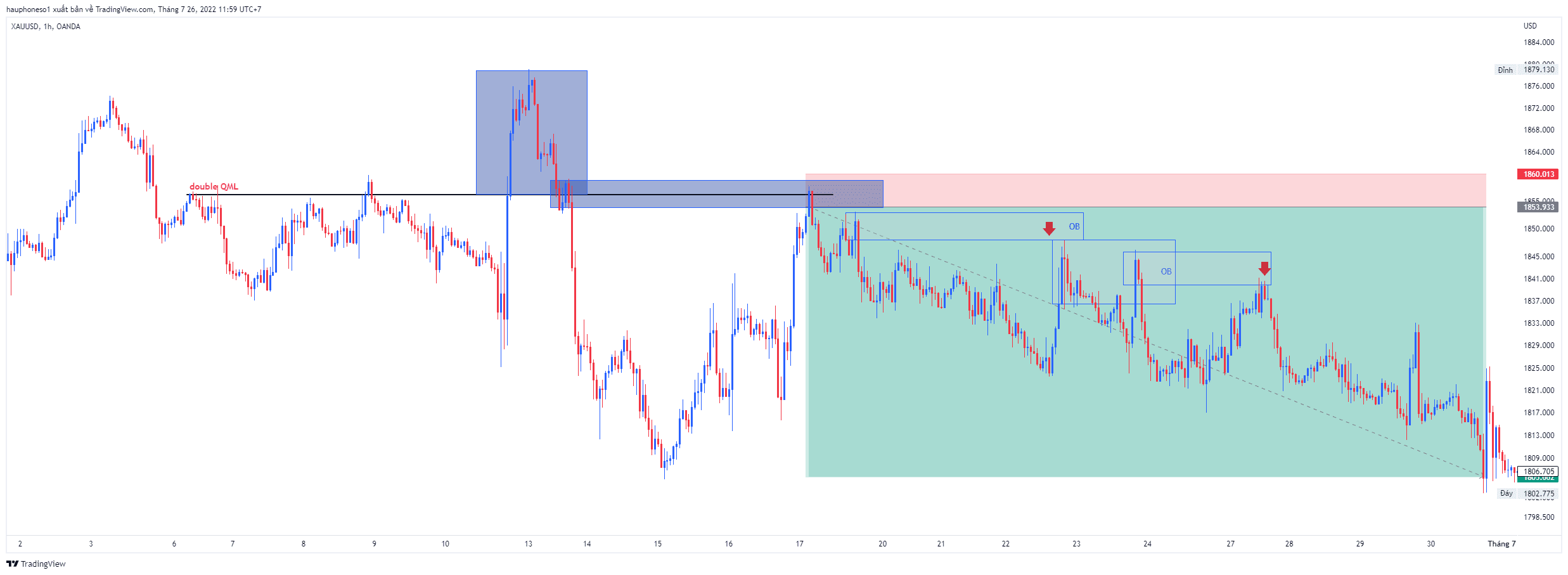
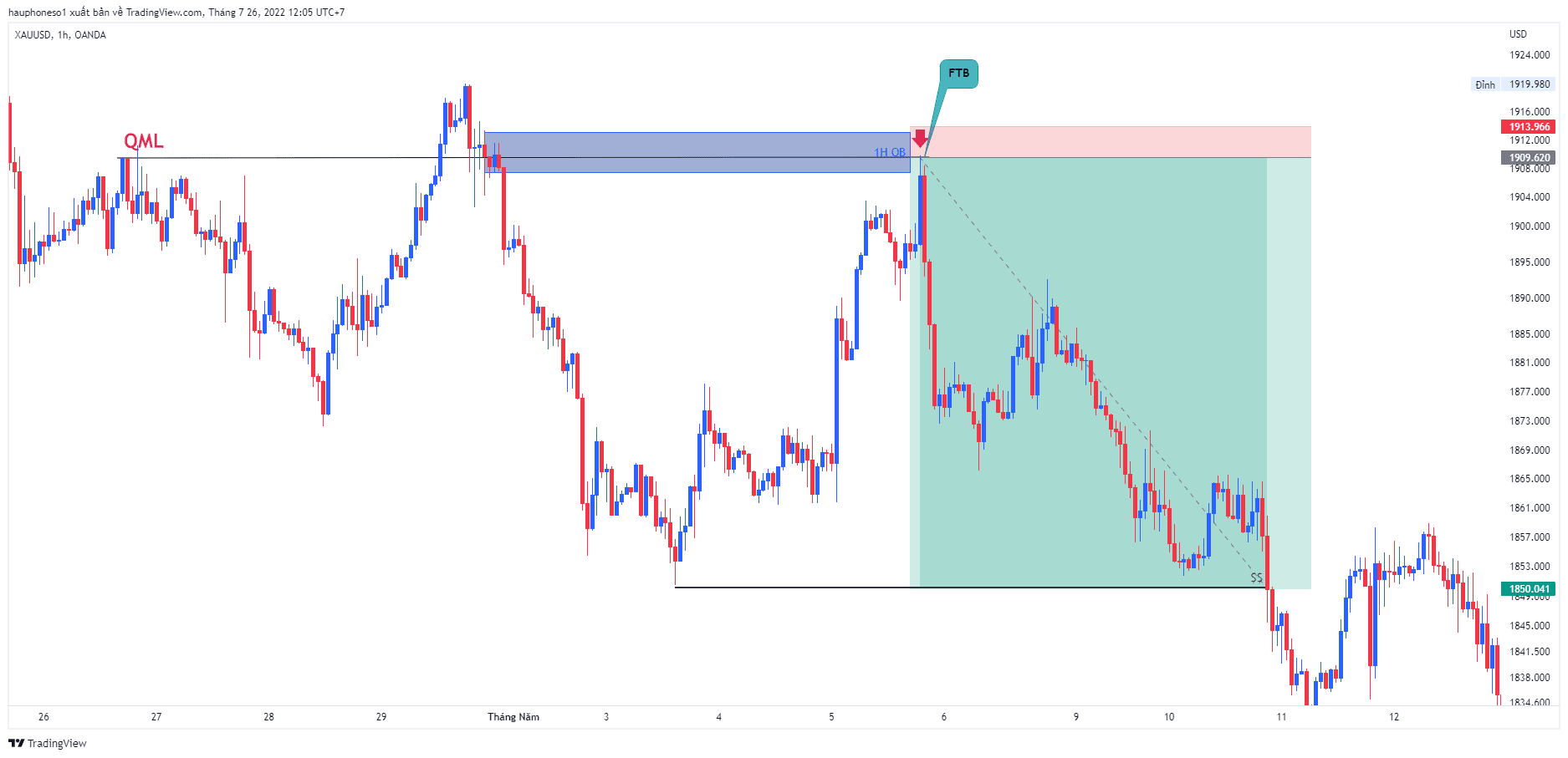
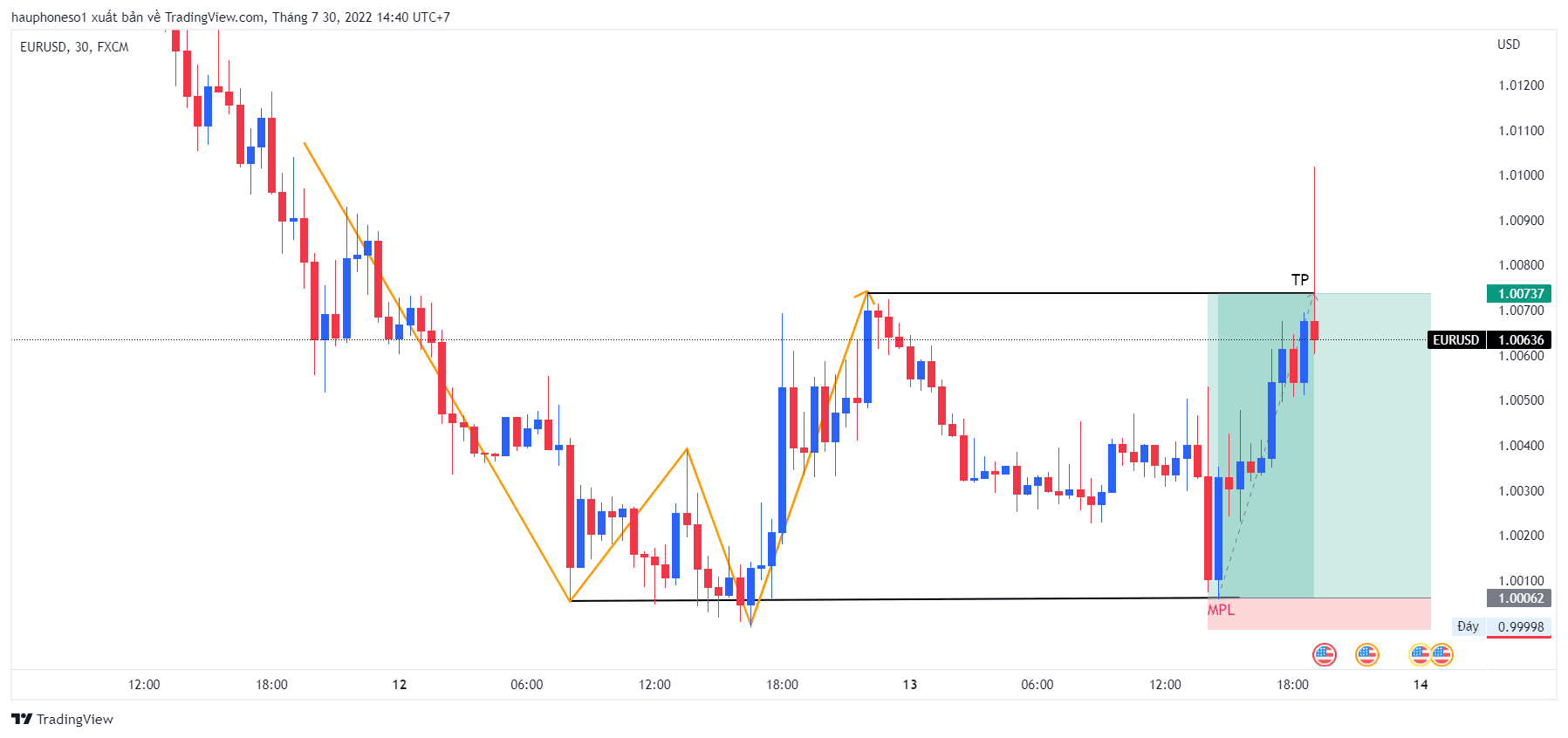
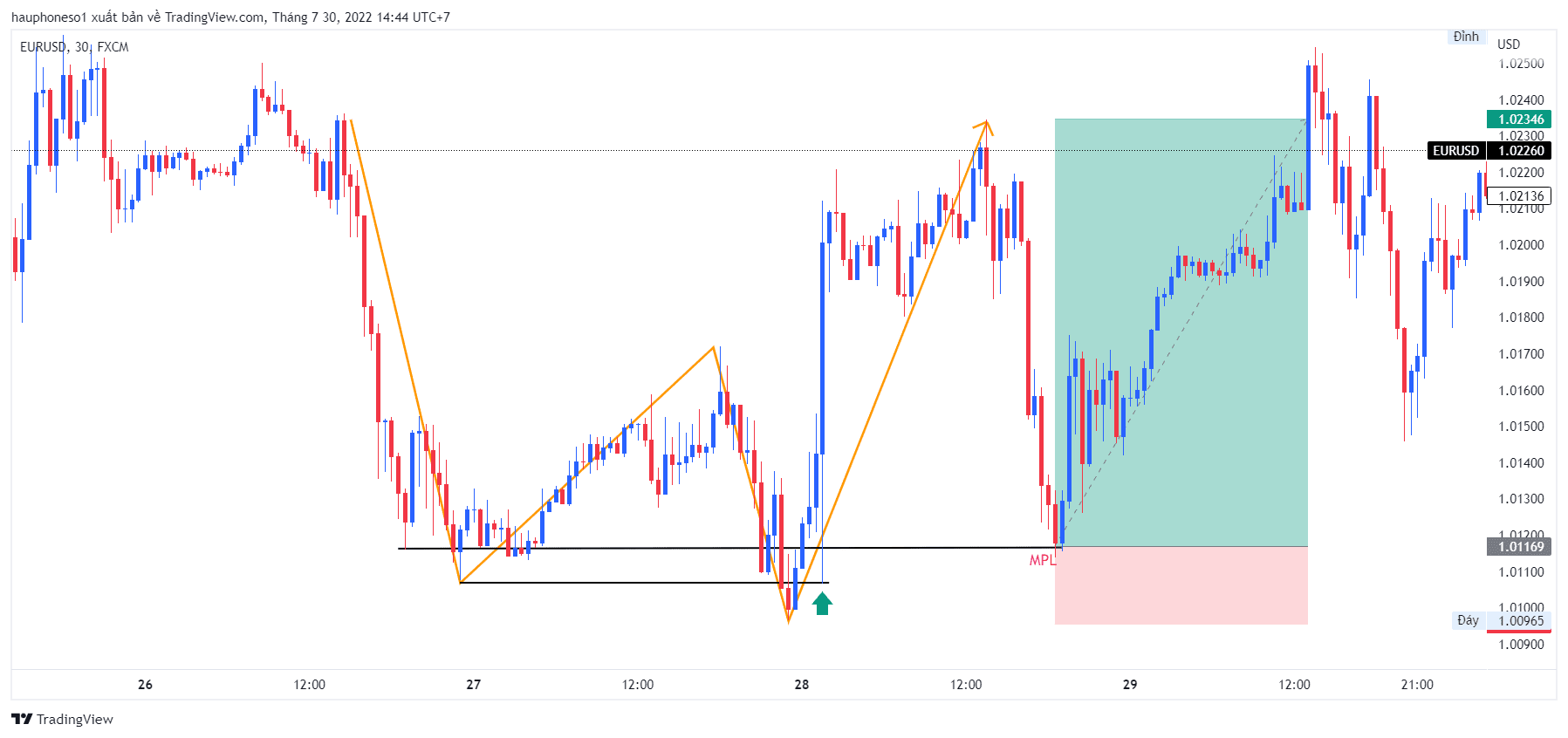
With Quasimodo Pattern, an order usually achieves quite high RR. To achieve 5R is not too difficult for the quasimodo pattern.
About in-depth Quasimodo setups, we will read the next article.